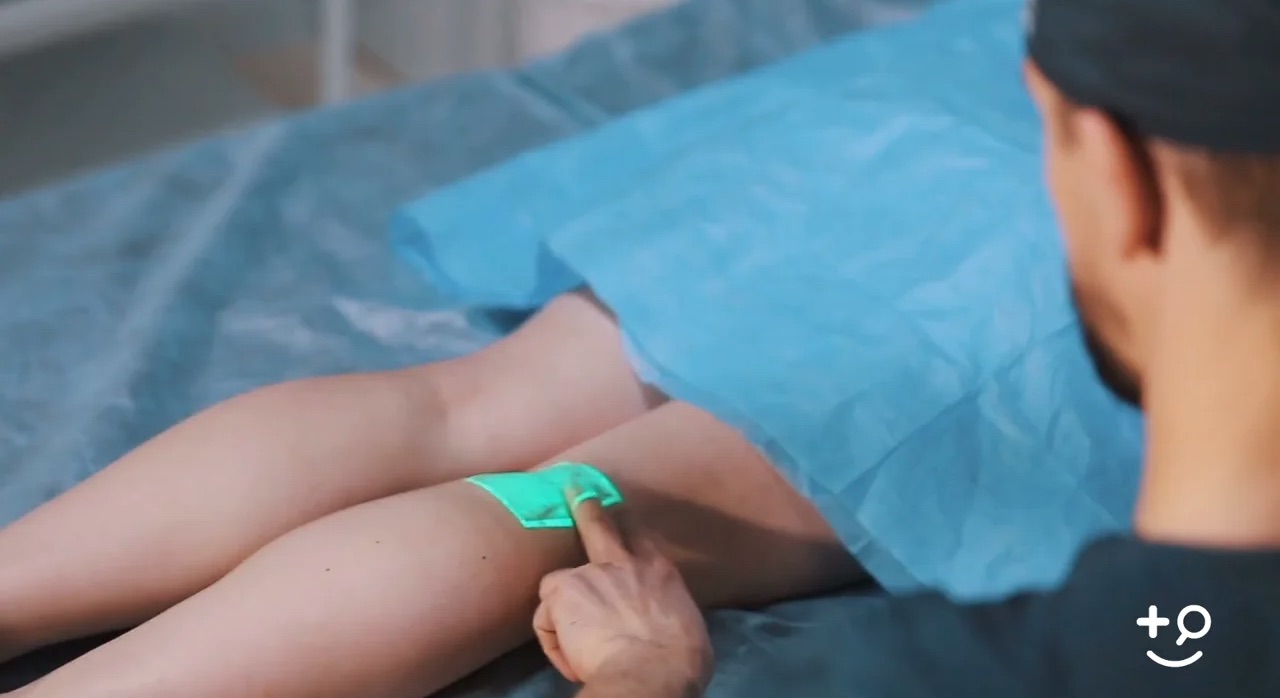What causes spider veins, and can you prevent them?
Spider veins are also known as Telangiectasias, are dilated small vessels that are visible through the skin. They may be red, purple, or blue and appear in thin lines, webs, or branches, and most often appear on the legs or face. Some cases of spider veins can be relatively small, and others more noticeable. They take their name from their striking spiderweb pattern. A bigger bluish and usually tortuous telangiectasia will be known as a reticular (feeder) vein. They are generally not painful or harmful, but some people may wish to treat them for cosmetic reasons. Spider veins on the face are often the result of tiny blood vessels bursting that could result from increased pressure or sun damage.
What causes varicose veins, and what’s the best solution for them?
Varicose veins are larger size subcutaneous blood vessels that have become swollen and twisted. They appear dark blue and stick out from the skin like raised tunnels and can be seen and felt right under the skin’s surface.
Veins carry blood back to the heart. Every time that we walk, our calf muscles are contracting and pumping blood through the veins. To prevent blood from flowing backward, they contain a one-way valve that closes once the blood passes through it. If this valve weakens or becomes damaged, the blood may struggle to flow in the correct direction, and it can begin to pool inside the vein. Over time, the vein has to become larger to accommodate the extra flow and produce spider veins or varicose veins.
Both varicose veins and spider veins are hereditary. Some common factors are age- as you age, varicose and spider veins are more likely to develop. Gender- Women are more likely to develop them than men. Medications containing female hormones, such as birth control or hormone replacement therapy, increase your risk of developing varicose and spider veins. Fluctuation in your weight can also impact the development of vein disease. A lifestyle like standing or sitting for long periods could also play a role.
Are there any ways to prevent spider and varicose veins?
There are conservative treatments to alleviate vein disease symptoms like wearing compression stockings, losing or maintaining a healthy weight, elevating your legs, avoiding standing or sitting for long periods, and exercise to keep your calf pump healthy.
What are the most significant recent breakthroughs in varicose vein treatments? Is there anything less invasive than surgery on the market?
If conservative treatments don’t help your symptoms, there are other options to treat varicose veins and spider veins. Modern medicine has allowed us to advance these treatments from being only possible to do in the hospital to being minimally invasive, office-based, and with minimal downtime.
We can now treat varicose veins with endovenous ablation. Endovenous ablation uses energy to cauterize (burn) and close varicose veins. Ablation is safe, less invasive than surgery, and leaves virtually no scars. The treatment is performed in the office under local anesthesia (tumescent anesthesia) with minimal discomfort, and patients can resume regular activities immediately after the procedure. Depending on the type of energy used, this procedure is also known as Endolaser Ablation or EVLT/EVLA. It uses laser energy directly into the vein to close it permanently. Radiofrequency Ablation (RFA) uses high-frequency radio waves to heat the targeted vein.
Another minimally invasive procedure that we now use to treat large veins that we can’t treat with ablation is ultrasound-guided sclerotherapy. The foam is visible via ultrasound imaging and can easily be tracked and guided to the venous problem’s source. A significant advantage of this method is that it allows the phlebologist to monitor the injection effect while ensuring the safety of all adjacent structures. The US Food and Drug Administration (FDA) has approved Varithena (polidocanol endovenous microfoam) to treat varicose veins.
The use of varithena has made this procedure very effective and safe for larger veins with the advantage of no requiring tumescent anesthesia.
Do you have any advice on treating spider veins on your legs?
The gold standard for spider vein treatment is Sclerotherapy. Modern sclerotherapy has been shown to reduce symptoms in up to 85% of patients with varicose veins and spider veins.
Sclerotherapy procedure іѕ a series of microinjections of a solution called “sclerosant” directly into varicose or spider veins. The sclerosing agent irritates the walls of the vessel, causing it to collapse and scar down. The procedure is now virtually painless and very well tolerated since we use cryo-sclerotherapy combined with augmented reality. Cryo- sclerotherapy consists of short bursts of cold air (-37C) that will numb the treatment area. Augmented reality combines light LED with polarization to enhance the visualization of spider veins. The number of treatments required is different for each patient, dереndіng оn thе еxtеnt and size оf your spider and varicose vein, ability to heal, and the level of cosmetic perfection desired.
Undoubtedly, the last two decades have seen a major revolution in the treatment of vein disease improving techniques and technology to allow minimally invasive procedures to relieve patient symptoms and cosmetic concerns improving patients’ lives.
 Back to Blog Homepage
Back to Blog Homepage
